Agency Processes:
Your Agency’s Guide to
Success
How do you optimize your agency processes?
Project managers and agency owners deal with the challenges of agency operations daily, such as supporting collaboration, ensuring that projects meet their milestones, and monitoring financials.
Agency processes go even further than that — they involve many departments and professionals, so
they must be as efficient as possible. This guide discusses essential agency processes and how to improve them across all agencies.
Keep reading to find the best strategies for efficient workflows
Key Takeaways
- Well-organized agency processes help businesses address strategic challenges and manage daily workflows. The bring various benefits, such as improved communication, increased employee satisfaction, and business operational efficiency.
- The benefits of optimized efficiency include reduced operational expenses and increased profits, a more satisfied workforce, and increased sustainability and flexibility.
- The main operating strategies include setting goals and tracking key performance indicators, supporting collaboration and transparency, and utilizing PSA tools for automation, time management, and more.
Understanding Agency Processes
Agency processes are concerned with everything that makes your business function. We can describe them as the systematic and strategic steps that help agencies deliver services, operate efficiently, and achieve their goals.
These processes can vary significantly from one business to another, but some are shared, such as client management and human resources management. Project-specific processes usually differ depending on your agency — a creative process in a digital marketing agency and a design agency can look quite different.
Agency Processes vs Agency Workflows
These two terms can be used interchangeably, but there’s a slight difference between them. Processes can be seen as the “what” of your agency: which activities need to be performed to drive agency management. Workflows usually define the specific sequence to complete a certain goal or the “how” of your agency. Together, they ensure smooth agency operations.
Workflows consist of workstreams, usually defined as a specific set of activities or tasks within a larger
initiative (check out our guide to workstreams in project management to learn more).
The Benefits of Streamlined Agency Operations
According to the 2023 Agency Insights Report, some of the main strategic challenges identified by agencies include:
- Balancing new business development with existing client work (18%)
- Managing cash flow and finances (13%)
- Staying up to date with technologies and trends (12%)
- Establishing and maintaining strong client relationships (11%)
- Attracting and retaining top talent (8%)
Focusing on your processes helps you address all of the above. The aim is to ensure that your repetitive
processes are as streamlined and efficient as possible so that your sales teams, core teams, and others,
can focus on high-level tasks.
Good processes can help you eliminate silos and improve communication, increase employee work-life
satisfaction, improve project performance and client retention, and more.
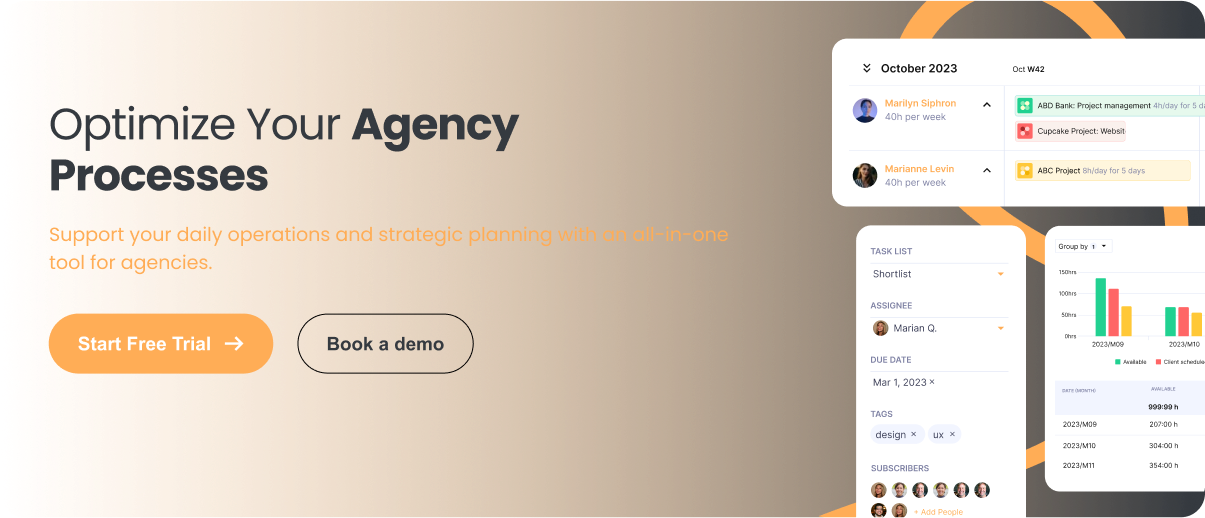
The Main Steps of Managing Operations
The entire process of optimizing a specific workflow includes:
- Evaluating current procedures
- Identifying areas of improvement
- Setting specific goals
- Monitoring key performance indicators
- Managing process documentation
The Main Steps of Managing Operations
Before you can start improving your processes, you need to fully understand your current procedures. The first step is to consider a single workflow from start to finish. For example, let’s take the process of creating and publishing a blog post, a typical marketing project management workflow.
- How long does it take to complete it: Consider how long it takes on average for a blog to go through its various completion phases — drafting, visual design, and publishing. Let’s say each step takes a couple of days usually.
- How frequent are disruptions: If this is your baseline, how often is each step delayed, and by how much time? Although tasks can vary from one to another in complexity, length, etc., significant and repeated variations from established timelines can signal areas for improvement.
- Which specific bottlenecks occur: Once you’ve identified the steps during which your process is lagging, you need to pinpoint why this happens. Is the person responsible for the content approval process too burdened with other tasks, or do the designers get unclear guidelines and have to spend too much time iterating?
- Is this process able to consistently achieve its objectives: Often, it’s difficult to recognize disruptions for what they are. If in doubt, go back to the process objectives. If the purpose of the blog post is to drive traffic to the website, the effectiveness can be measured by analyzing search engine performance and other key digital metrics. If they meet or exceed targets, the process can be considered effective. However, if your KPIs are always short of your goals, this means it’s time to consider the process.
Setting Specific Goals and Establishing KPIs
We’ve now reached another essential concern. How do you define your key performance metrics? These can vary significantly depending on the process that you’re analyzing. For example, if you’re looking to improve your collaboration and team workloads, you could consider business capacity planning metrics such as:
- Estimated vs. Completion Dates: This metric can reveal issues with unrealistic planning or inefficiencies. Analysis of previous projects can also help you optimize processes for future engagements.
- Billable Utilization: The utilization rate shows how effective your employees really are. You can also compare utilization between teams and individuals to guide strategic decisions, such as reskilling or hiring.
- Employee Retention: Low employee retention points to issues with your organizational principles, work culture, or project management.
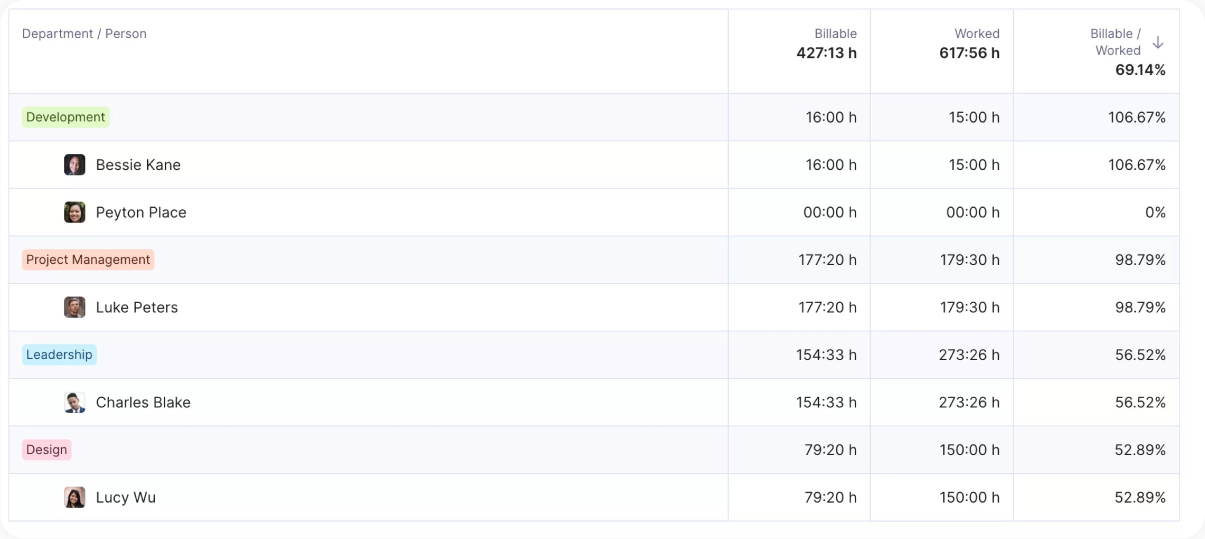
AN OPERATIONAL MANAGEMENT SYSTEM LIKE PRODUCTIVE helps visualize and forecast key agency metrics
Keep in mind that some metrics of success can be intangible. For example, a new process that doesn’t necessarily
improve financial metrics but increases employee satisfaction can still be considered a good outcome.
Optimizing the Documentation Process
Process documentation can be a pain point for many agencies. Research shows that 97% of organizations have minimal or no digital documentation processes, and 72% still use a mix of paper-based and digital processes (Forrester).
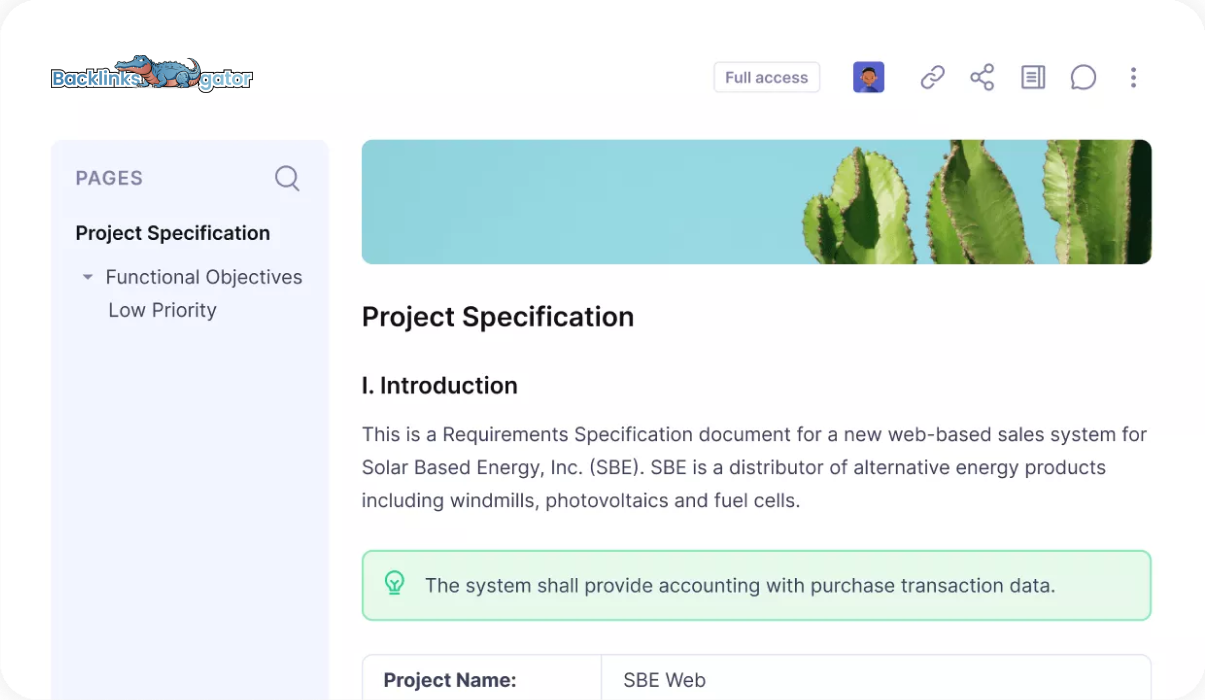
Productive’s Docs are a single source of truth for centralized data
Digital documentation has many benefits, such as real-time collaboration, easier file sharing, etc. You can also create content faster, especially by utilizing the latest technology. For example, Productive AI can help you manage your Docs by rephrasing complex terms, changing your tone of voice, summarizing text, and much more.
For starters, what should you put in your process documentation? Here are some suggestions:
- Process Maps and Diagrams: Visual representation of the various steps of a process.
- Roles and Responsibilities: Detailed descriptions of roles on a process — consider using a framework such as RACI (responsible, accountable, consulted, informed people).
- Bottlenecks and Pain Points: Explanations of specific bottlenecks, how they were identified, and actionable plans for addressing them.
- Performance Metrics and Targets: The goals of the process, how they are measured, and what are your specific targets.
Another important thing to ensure is that the document’s location is clear to all relevant parties, as research states that 83% of employees will recreate documents if they can’t find them (M-Files). You don’t want people doing the same thing twice, and having duplicate documents creates additional issues when it comes to updating and syncing information.
A great way to manage your agency documentation is to use an all-in-one software for agency management. This helps keep all essential workflows on one platform.
Productive offers project and task management, budgeting, and resource planning and a way to manage your files with Docs.

Core Operations for Agencies
Now, let’s examine core agency processes. They include:
- Client relationship management
- Project management and execution
- Talent acquisition and development
- Financial planning and management
Client Relationship Management
Client relationship management (CRM) includes strategies and practices used by agencies to handle communications with current and potential clients.
When it comes to acquiring new clients, some important steps of the process include targeted marketing efforts, personalized outreach, and client pitching. Another important factor is working on cultivating your brand image by engaging industry professionals and focusing on positive client interactions.

Source: The 2023 Global Data Report on Agency Valuations
Ensuring good relationships with existing clients isn’t important just for positive word of mouth. According to Promethean Research, digital agencies that use retainers (80% do) tend to have more stable growth rates regardless of the overall economic circumstances. For repeat business, it’s important to maintain transparent communication for project
progress and financials.
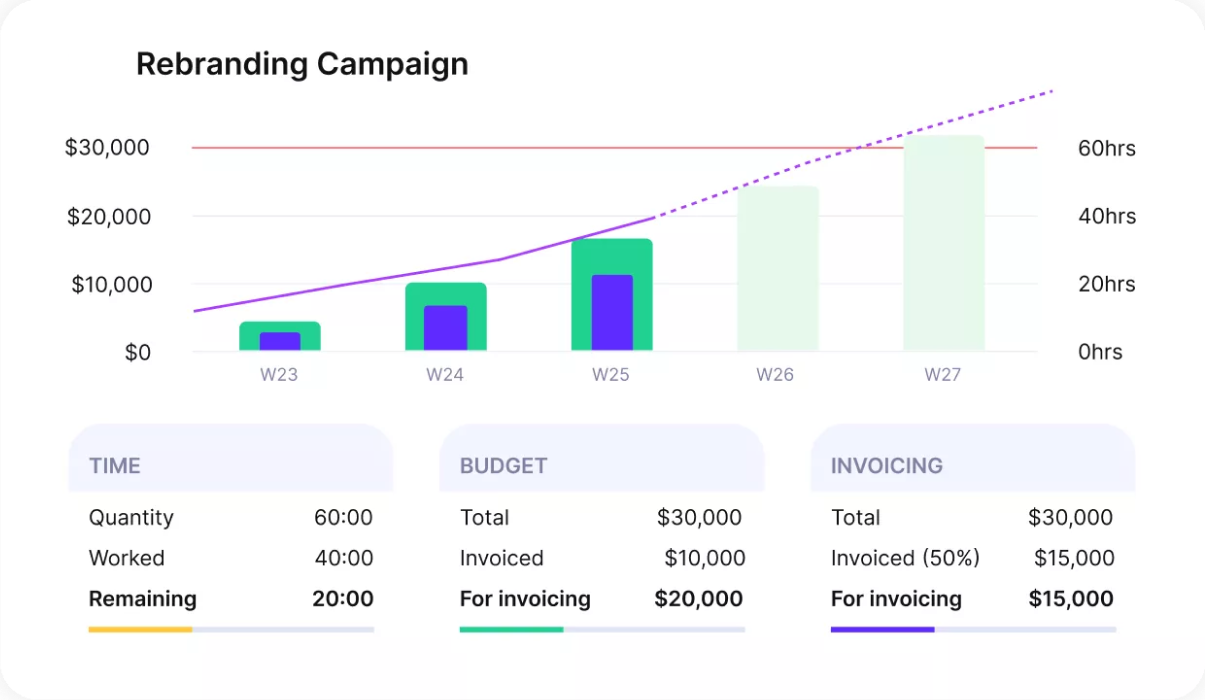
With Productive, you can check the financial impact of your resource scheduling
A practical example of how you could support transparency and client communication would be to invest in an agency
project management system. Some types of software, such as Productive, can help you visualize and forecast your
project finances and share this information with clients.

Additionally, Productive offers an integrated CRM for agencies to streamline client prospect management.
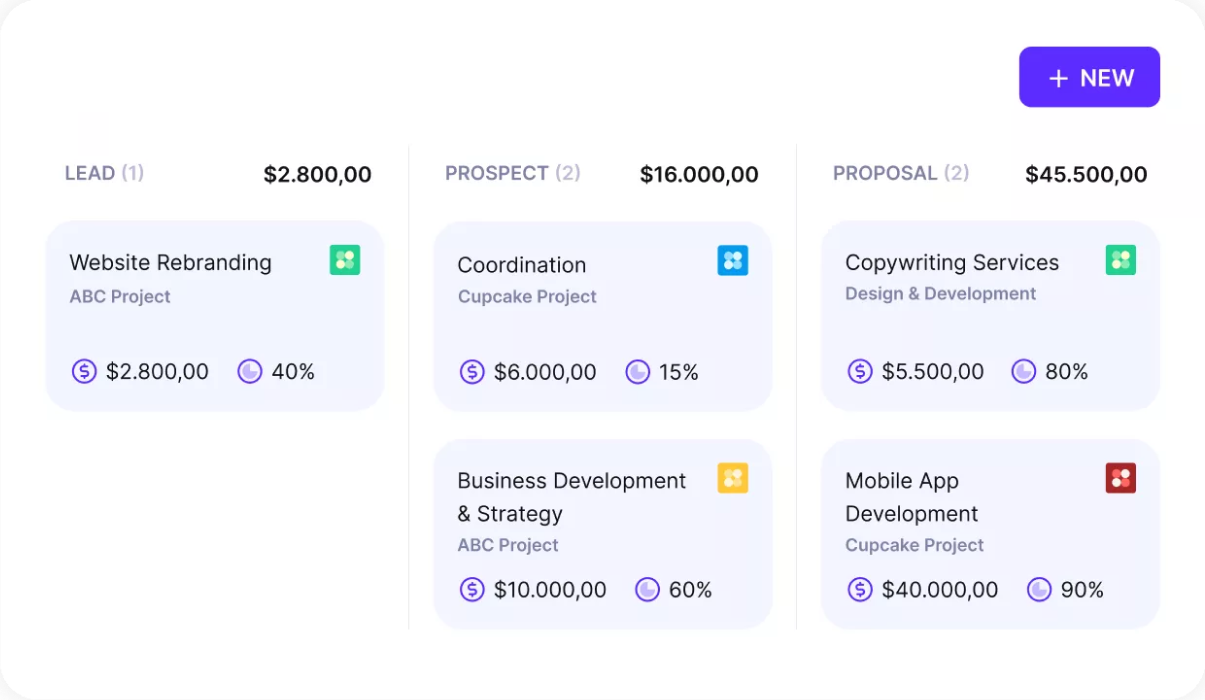
Support your client prospects as they progress through the sales pipeline
Project Management and Execution
Some crucial steps of project management include:
- Project initiation and planning
- Defining milestones
- Assigning tasks across resources
- Visualizing and managing progress
- Keeping clients up to date
There are various ways to organize your projects and tasks. Nowadays, Agile methodologies are most commonly used, especially for dynamic projects and cross-team collaboration. However, there are others, such as Waterfall, a traditional and sequential approach, and Scrum and Kanban, two popular subsets of agile.
When it comes to visualizing project timelines, collaboration tools have various ways of simplifying the creative process and project management for creatives.
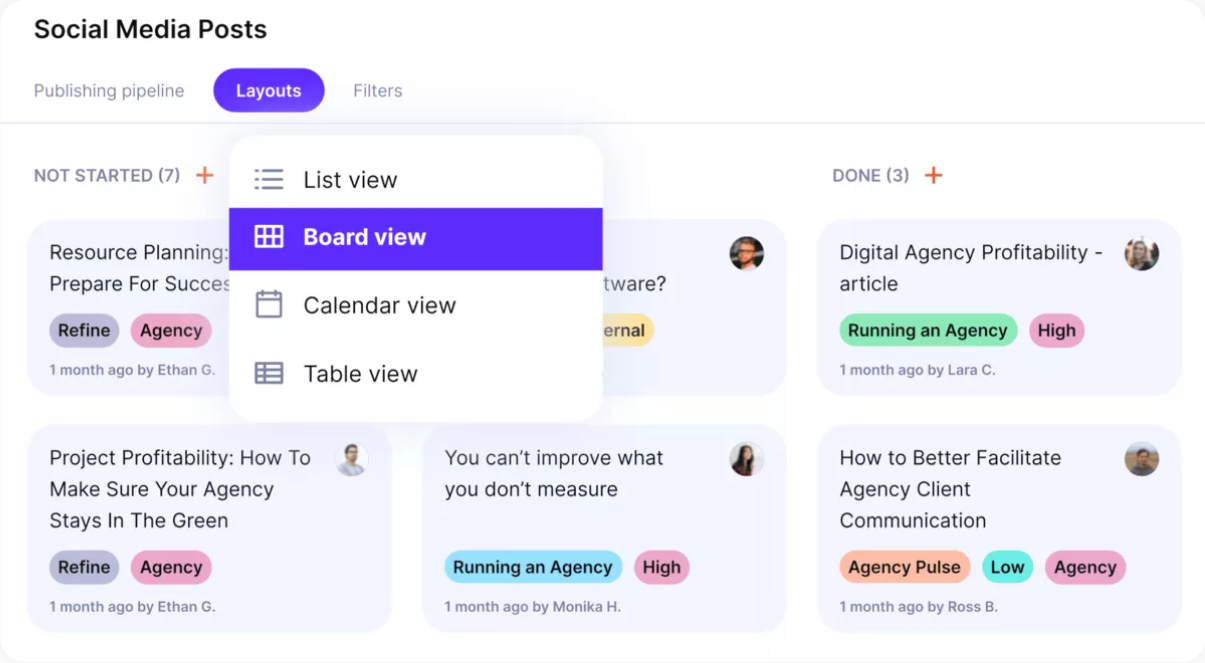
Switch between different layouts to tailor your management to your working style
For example, in Productive, you can visualize your progress with various layouts, including List, Calendar, Gantt, and Kanban.
You can assign custom statuses to your projects, set deadlines and estimations, and comment on each task. With automatic notifications, it’s easier to ensure that everyone is aware of the latest task updates.
Clients can also join your project boards, view, create, and leave feedback on tasks, depending on their access rights.
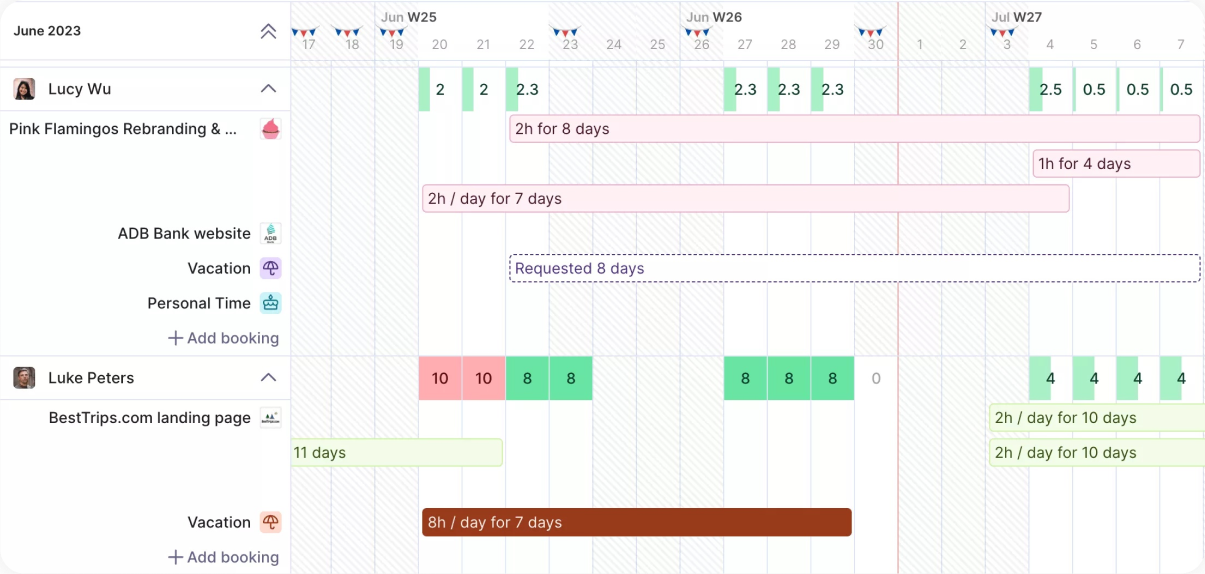
Get the most out of you agency’s resources with Productive
Another essential aspect is resource planning, which ensures tasks are appropriately delegated, and resources are used
efficiently. It usually includes creating a comprehensive plan that includes resource allocation across the project timeline, with time off days and working hours by days.
Find out more by reading our article on creating the best capacity planning template for optimized resourcing
Talent Acquisition and Development
When it comes to talent management, agency operations professionals need to think about three key points:
- How to attract the right talent
- How to keep your workforce competitive
- How to retain your current talent
Attracting Talent
Strategies for attracting the right profile of employees are usually related to what your business is offering. If you ensure
you’re providing competitive compensation and benefits, you’ll be well-positioned to get high-quality talent. Another important thing is outreach: invest in various digital or in-person promotional opportunities to reach out to industry
talent.
Developing Talent
Initiatives to develop your talent are important for succession planning or ensuring that key positions within the
organization can be filled with skilled employees as current leaders retire or move on. Having a capacity building plan is also important for employee engagement, as it offers a clear path for growth and advancement, contributing to higher
retention rates and organizational resilienc
Retaining Talent
According to a report by the Work Institute, some of the most frequent factors of voluntary turnover include lack of growth opportunities, poor work-life balance, bad workplace communication, and limited training and resources. By
addressing these issues, companies can create a more satisfying environment that encourages employees to stay and
grow with the entire team.
Financial Planning and Management
Finally, financial management and planning for agencies involves a variety of processes, such as:
- Effective Project Budgeting: Estimating the financial resources required for a project and managing costs to keep projects on budget.
- Revenue Recognition: The process of identifying and recording project income according to accounting principles (learn more about revenue operations).
- Client Invoicing: Ensuring a stable cash flow by issuing invoices and receiving timely payments.
- Cost and Expense Control: Monitoring and managing various agency expenditures while optimizing resource allocation.
- Financial Forecasting: Predicting financial performance based on historical data and market trends to support strategic planning.
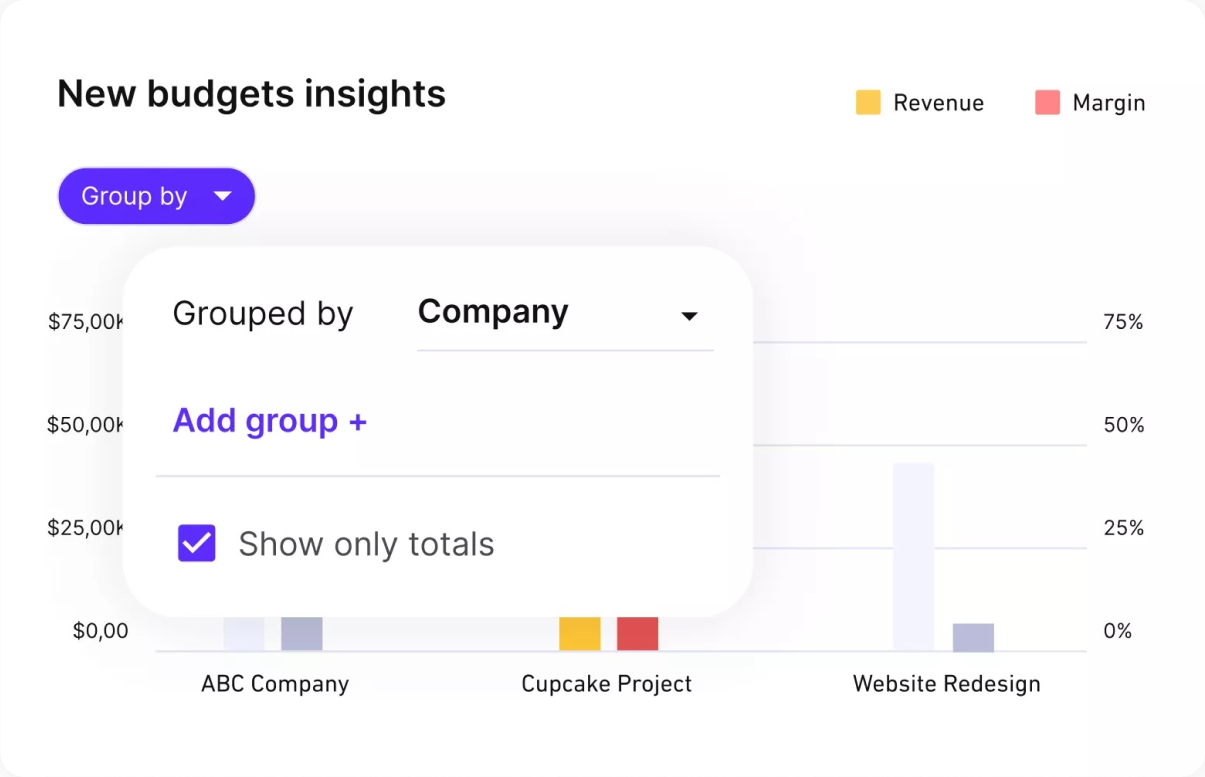
Customize, filter, and group your business data
Financial management and accounting tools will be your best option for effective workflows. Taking
Productive’s Budgeting capabilities as an example, you can use the platform to:
- Create and manage your agency rate card and budgets
- Track billable and non-billable hours
- Visualize and forecast revenue and profitability
- Generate brand-friendly invoices
- Manage external expenses with Purchase Orders
- Create and share various financial reports

Read the full story: Joi Polloi’s Team mates Have More Autonomy Since Using Productive
Overview of Specialized Agency Processes
- Advertising and branding strategies: Understanding the target audience is essential for the success of advertising and branding agencies. Creativity and consistent messaging follow close behind. This helps brand and advertising agencies drive engagement and conversion and align their creative process with audience value and expectations.
- Creative and design workflow optimization: In creative agencies, workflow optimization usually includes streamlining manual processes to ensure teams can focus on their creativity. Another important part of creative content creation is efficient teamwork, client feedback loops, and version control.
- Digital marketing and strategy: Digital marketing agency workflows include processes such as creating strategic plans for digital advertising, running social media campaigns, creating engaging content, and SEO. Having the right analytics tools to manage performance metrics and drive best practices is the key to meeting client expectations.
- Public relations and communications: Effective PR strategies require in-depth knowledge of the media landscape, the ability to anticipate public reaction, and the agility to respond to evolving situations. Building and maintaining strong relationships with journalists, influencers, and stakeholders provides the basis for successful PR processes.
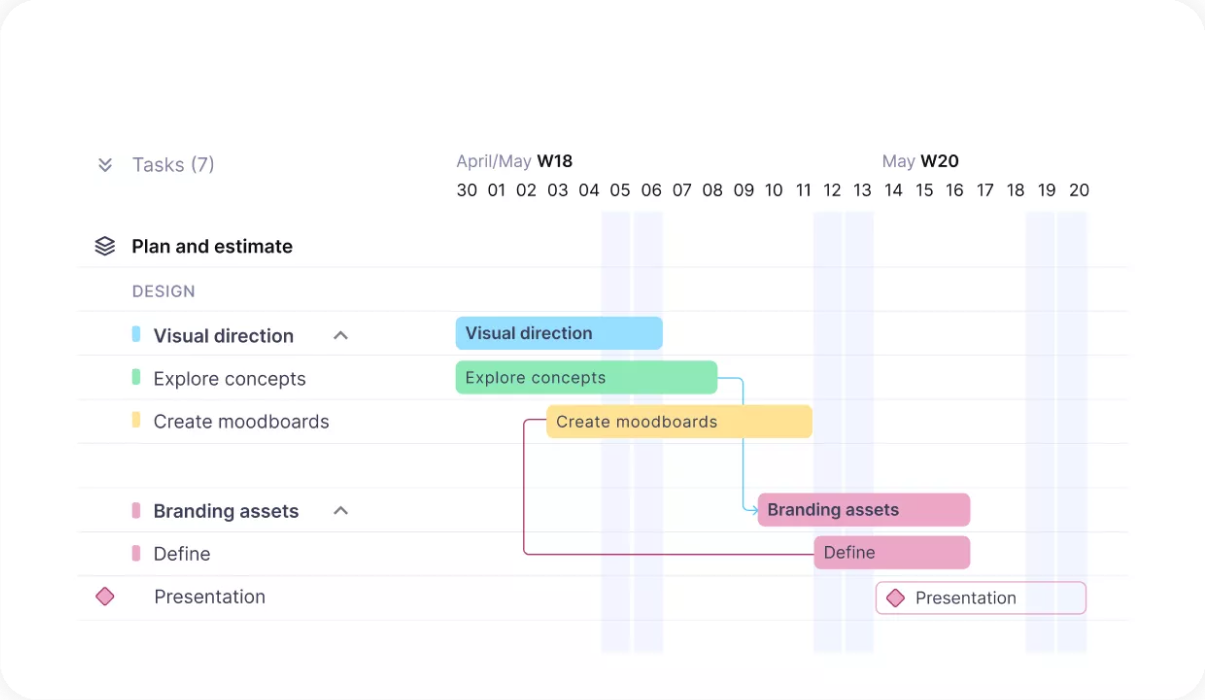
Drive improvements to your CREATIVE processes with Productive’S GANTT CHARTS
3 Tips for Optimizing Your Agency Processes
Now that we’ve explored the main types of agency workflows, let’s conclude with best practices for addressing potential challenges that may occur while implementing new processes.
1. Viewing All Processes as Strategic Investments
Some optimization initiatives can have a very quick return on investment, such as automating a spreadsheet by
implementing a tool with real-time reporting. Others, such as employee training programs or branding initiatives, can take a long time to have tangible results. It’s important to remember that not everything can be a quick win. Additionally,
some process optimization may impact your agency in subtle ways — for example, by increasing employee satisfaction and decreasing turnover.
2. Driving Adoption Across All Levels of the Agency
Resistance to change is one of the main obstacles to agency growth. It might stem from a lack of understanding, perceived loss of control, or simple fear of change. Overcoming this resistance first involves getting everyone on the management level to buy into the process change. Then, communicating changes clearly and educating all affected team members ensures that everyone understands the benefits of the new procedure and provide their insights.
3. Utilizing Tools for Better Project Management
The right tools can transform your agency’s processes. The main challenge is finding the right software for your
business needs and ensuring that you’re getting the most out of the tool. For successful process optimization, consider using an all-in-one tool tailored specifically to agencies.
These types of solutions serve as a single source of truth for all core agency processes, such as financial management, resource planning, and project planning. Additionally, they can simplify collaboration, communication, and standardization by centralizing all information on a single platform.
To find out more about the benefits of comprehensive tools for agencies, book a demo with Productive today.

Boost your business growth
We love talking link building. Let us know about your project and we’ll send you a free proposal
